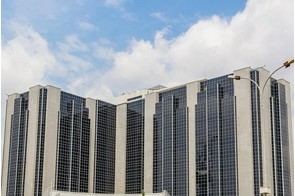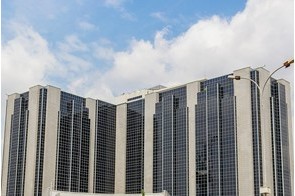Latest News
Large Nigerian banks are more resilient than small ones – Fitch

News Highlight
Fitch said: “Zenith Bank is stronger than the rest, while capital weaknesses at First Bank and Diamond Bank have a significant influence on their ratings.”
Fitch Ratings said today that larger Nigerian banks are more resilient to stresses compared with smaller ones. The ratings agency said it noted the disparity after regulatory stress tests by Central Bank of Nigeria (CBN) highlighted differences in capital strength across the banking sector.
On Wednesday, the CBN published its Financial Stability Report, showing that medium and large banks collectively could withstand a 100 percent increase in non-performing loans (NPLs) but small banks (with assets less than N500 billion) would struggle to withstand even modest NPL deterioration.
“In our own assessment of the banks we rate, which are mostly large (assets more than N1 trillion), capacity to absorb losses through capital varies considerably,” the ratings agency said. “Zenith Bank is stronger than the rest, while capital weaknesses at First Bank and Diamond Bank have a significant influence on their ratings.”
Fitch said it currently places all Nigerian bank ratings in its highly speculative 'B' ratings range, although capitalisation is an important differentiator. “The scores we assign, based on capitalisation and leverage metrics across the sector, are low, but vary considerably,” the ratings agency said.
The eleven banks under Fitch’s ratings purview are: Zenith Bank, Access Bank, Guaranty Trust Bank, Stanbic IBTC, United Bank for Africa, Fidelity Bank, and First City Monument Bank. Others are Union Bank of Nigeria, Wema Bank, Diamond Bank, and First Bank of Nigeria.
The CBN’s stress test assessed the capital adequacy ratios (CAR) of the banks – a determination of the ability to withstand a number of credit shocks, including a general rise in NPLs, specific deterioration among banks’ five largest obligors, and defaults in the oil and gas loan portfolios.
Small banks were particularly vulnerable, as they had average CAR of 3.14 percent as at December 2016, due to increases in NPLs. On the other hand, medium and large banks had stronger starting positions, with CARs of 12.75 percent and 15.47 percent, respectively, at year end.
According to CBN figures, NPLs represented 14 percent of total banking sector loans at 2016 year-end, compared with 5.3 percent in the previous year end.
Unreserved NPLs represented a high 38.4 percent of total end-2016 regulatory capital (compared with 5.9 percent in 2015), signalling considerable weakening in the overall capital position of Nigeria's banking sector, Fitch said.
“Not all news relating to capital at Nigerian banks is negative. The banks remain profitable, with results boosted by wide margins and currency revaluation gains, large in some cases. These are one-off gains but they have been realised and provide a strong boost to capital, which is positive, especially in light of weak asset quality,” the ratings agency said.
Related News
Latest Blogs
- CBN is fighting inflation instead of stagflation
- Why electricity privatization failed (2)
- How net metering can boost embedded power generation
- Adaora Umeoji and gender in Nigerian banking leadership
- Is protest an endangered human right of Nigerians?
Most Popular News
- IFC, partners back Indorama in Nigeria with $1.25 billion for fertiliser export
- Ali Pate to deliver keynote speech at NDFF 2024 Conference
- Univercells signs MoU with FG on biopharmaceutical development in Nigeria
- CBN settles backlog of foreign exchange obligations
- CBN increases capital requirements of banks, gives 24 months for compliance
- Euromonitor forecasts Sub-Saharan Africa GDP to grow to $4.5trn by 2040






